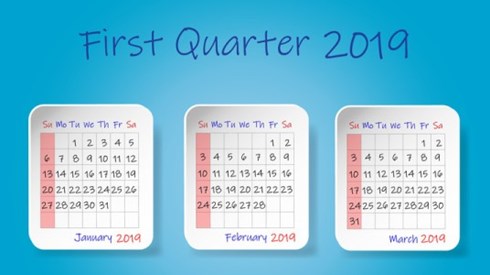Synopsis: 2019 1Q Reinsurance Markets

John M. Foehl | April 29, 2019

In our January article titled "Captive Insurers and the 2019 Reinsurance Markets," we commented, "Reinsurance is an integral part of the risk management function for most captive insurers.… [W]hile reinsurers have sought rate increases, especially in the property catastrophe market, pricing has been relatively stable." We provide a follow-up to our January article with a synopsis of the 2019 first-quarter (1Q) reinsurance markets based on the information contained in reports from JLT Re, Willis Re, and Aon.
We recommend captive insurers and/or their captive managers make a habit of reading market reports from all reinsurance brokers, not just those of your current reinsurance broker. The inferences drawn by JLT Re, Willis Re, and Aon differ, and by collating information from multiple sources, your captive will be better positioned to make informed decisions concerning its own reinsurance program.
We'll begin with an excerpt from each report's executive summary.
The executive summary for the JLT Re report, titled Reinsurance Market Prospective: Uncharted Territory, begins as follows.
Reinsurance renewals at 1 January 2019 broadly defied early expectations of post-loss firming for the second consecutive year, as reinsurers’ desire and ability to underwrite risks remained healthy overall. Market conditions nevertheless tightened in some areas as dampened reinsurer appetite, as well as increasing demand, was observed for business classes that suffered sizeable losses or where performance has deteriorated in recent years.
The Willis Re report, Willis Re 1st View—Rational Markets, stated as follows.
With the final results for 2018 now released, virtually all reinsurers have posted improved combined loss ratios for 2018, though for many reinsurers, the improvement is marginal.... For treaty business, many reinsurers expressed hope that the April 1st 2019 renewals would see a stronger pricing increase momentum than at January 1st. In reality, buyers experienced rational rate increases from reinsurers, which were in some cases substantial, on loss-affected business. These rate increases were balanced by flat renewals on non-loss affected classes and programs. There are no emerging signs of generalized hardening rate levels across the market and pricing remains rational. Consequently, the observation from our January 1st View regarding primary rates moving faster than treaty rates still holds true.
Finally, the Aon report, titled Reinsurance Market Outlook, said the following in its Executive Summary, "Supply Weathering the Storm."
Despite a reduction of 3 percent in total global reinsurance capital from year end 2017 to 2018, reinsurers continue to offer coverage and terms to insurers that show that reinsurance capital is weathering the storm of the prior few years' catastrophe events. The market continues to see additional accretive buying opportunities for insurers. Even with this, the macro picture still shows capital has increased by nearly 30 percent since 2011 across traditional and non-traditional capital sources and remains adequate for demand in all markets.
Our observations, based on a review of all three reports, follow.
The indications we first wrote about in early January that 1Q renewals would see fairly stable pricing increases were borne out by what transpired. Willis Re classifies what transpired as "rational pricing," while JLT Re noted reinsurers were disappointed pricing didn't firm as much as they would have liked. Aon provides context to all of this by noting that while reinsurers' capital positions declined in 2018, they are still up a full 30 percent since 2011.
For captive insurers, this means reinsurance continues to be both accessible and affordable assuming the captive has not had significant losses from catastrophe exposures or deterioration in loss ratios for other lines of business. Therefore, captives would be well served to continue to avail themselves of the ability to transfer risk off their balance sheet to the reinsurance markets.
However, captives need to be aware of the issues reinsurers face that warrant continued surveillance.
- First, the hoped-for increase in bond market yields and an increase in inflation have not materialized to the degree originally predicted. That means reinsurers' investment performance, while better than several years ago, is unlikely to continue in a positive direction as book yields stagnate. If true, this will eventually cause reinsurers to look for better overall performance from their underwriting book of business.
- Second, at least for property lines, Swiss Re in a press release highlighting a new sigma report, titled Natural Catastrophes and Man-Made Disasters in 2018: 'Secondary' Perils on the Frontline, said, "The catastrophe loss experience of the last two years is a wake-up call for the insurance industry, highlighting a trend of growing devastation wreaked by so-called 'secondary' perils (independent small to mid-sized events, or secondary effects of a primary peril). Insured losses from natural catastrophes in 2018 were $76 billion, the fourth highest one-year total, … and more than 60% of the losses resulted from secondary perils." Captives writing property business need to be aware of this trend and determine its overall impact potential on their own books of business.
- Finally, captives should pay attention to how the insurance-linked securities (ILS) markets are impacting traditional reinsurers and what the outlook for these markets is as well. Artemis produces a quarterly report that contains useful information on the catastrophe bond and ILS markets.
We will provide further reinsurance market updates and commentary after the July 1, 2019, renewals occur.
John M. Foehl | April 29, 2019




